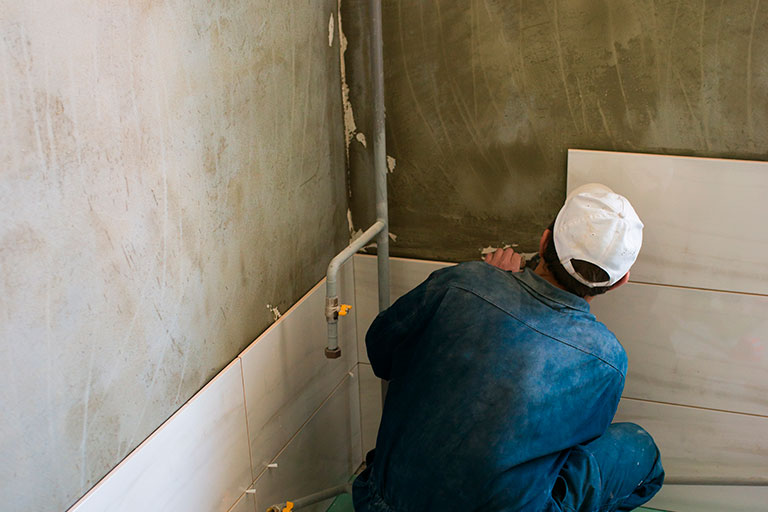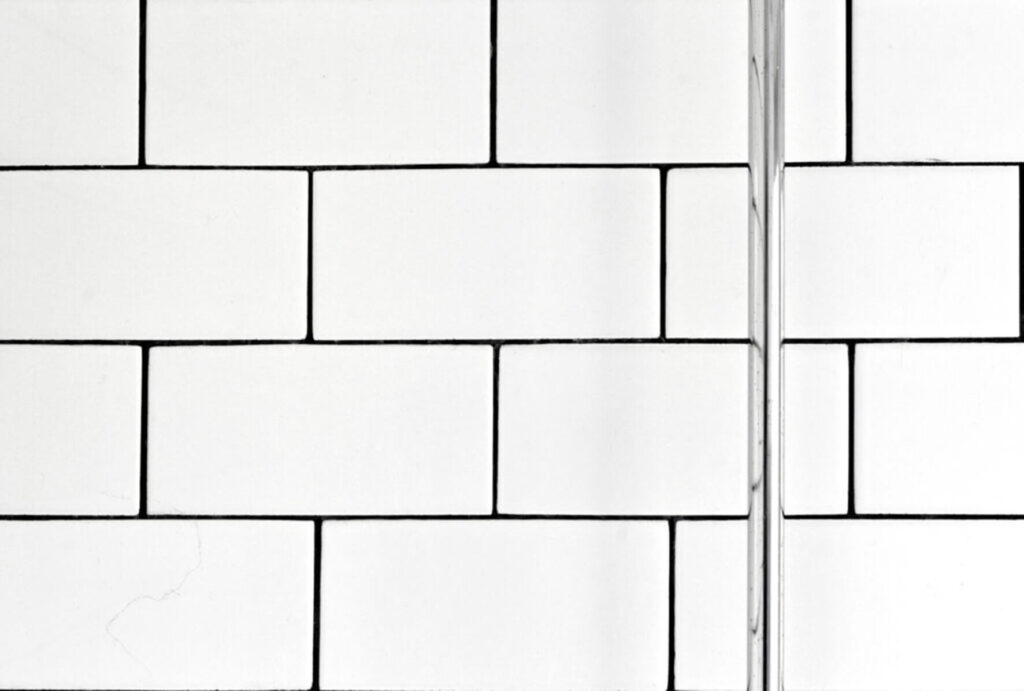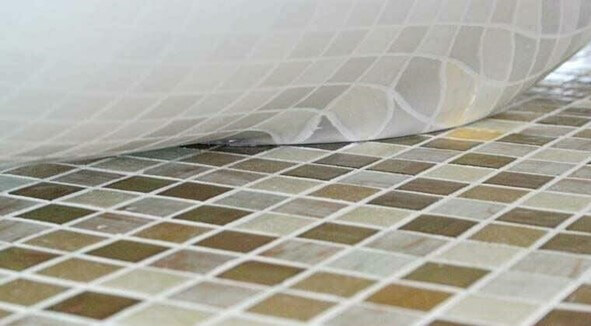Tile floors and backsplashes are heavily favored by most homeowners, but for the average DIYer, they also present some of the most daunting remodeling challenges. To avoid the headache but accomplish the look, many people are resorting to alternatives like stick on tiles. Taken to the extreme, some homeowners have even done complete tile installations with these, such as peel-and-stick kitchen makeovers with impressive results.
Although they’re cheap and quick solutions, are stick on floors and backsplashes worth the investment, or is it better to spring for the real deal? We’ll weigh the pros and cons in this article.


Pros of Stick on Tiles
One of the primary benefits of stick on tiles is the cost. The cost per square foot of peel-and-stick is similar to ceramic tile, ranging anywhere from $.50 to over $25. However you’ll usually save on immediate expenses like tools, mortar, and grout.
Anyone can install stick on tiles with a fair amount of confidence. You’ll eliminate any labor costs and save on materials in most cases, even if you go through some trial-and-error.
Easy On, Easy Off
Nearly every installation will force you to shape your tiles as you work around cabinets, windows, and other fixtures. To cut ceramic tile correctly, you need skill, patience, and a particular set of tools.
By contrast, stick on vinyl tiles only take a sharp X-Acto knife, a tape measure, and a steady hand to pull off a seamless look. You can also make it look more authentic by running a line of caulk where the backsplash meets the countertop.
When it comes time to change up the floor or backsplash, taking off stick on tiles is much faster than removing real tiles. If you’re moving out or you have some minor damage to one of the panels, it’s easy to peel off and replace without doing extensive surface preparation.
Variety of Materials
The most common and least expensive stick on tile is vinyl, which usually costs around $1 per square foot. Vinyl is easy to cut and provides a three-dimensional texture to mimic real tile.
For a higher-end look, you can find stick on tiles made to look like wood, metal, stone, and glass. Hard elements are usually incorporated in thin veneers to reduce the weight, but it’s all you need to have an authentic aesthetic. With the endless array of available colors, materials, and finishes, it’s not hard to find a perfect floor or backsplash match for the rest of your kitchen.

Cons of Stick on Tiles
Peel-and-stick tiles are becoming more popular as more advanced constructions emerge. But the superiority of real tile reveals itself in many ways, and if you need the highest value from your remodel, it’s a clear choice. Here are a few of the drawbacks to using peel-and-stick tiles.
Inferior Looks
You get what you pay for when it comes to these tiles, and although they may last several years, cheap options won’t pull off a perfect imitation of tile, even from a distance.
If you use inexpensive stick on vinyl tiles, there will be a small gap between them that will be impossible to conceal completely no matter how precise you are when lining them up. And like luxury vinyl flooring, the texture print under the wear layer likely won’t fool anyone into thinking it’s the real thing.
Shorter Lifespan

Stick on tiles last anywhere from five years to over 20. It all depends on the material, the quality of the installation, and how much wear and traffic they endure.
A peel-and-stick alternative will not have the lifespan of tiles. There are gaps between tiles that can allow moisture to seep in, which can present several issues. If water gets behind the panels, you’ll see them shift and separate from the wall over time, and mold has an opportunity to grow behind them in the meantime.
Some of the more expensive tiles allow you to grout between them for more durability. Still, thin-set mortar is a more powerful adhesive than the backing on peel-and-stick tiles.
You can use adhesive behind the panels for a stronger hold. But once you start adding that and the grout, it may make sense to put in the extra effort and go with real tile.
Ceramic tiles seal out moisture, and that’s why other options can never fully replace them. Although you can get away with stick on floor tiles in bedrooms, laundry rooms, and some kitchens, they’re impractical in bathrooms.
Low Value
If you’re planning on selling your home, you might want to replace stick on tiles around the home with upgraded material. Peel-and-stick tiles are unappealing to most homebuyers. They may even look a little closer at the rest of the house if they suspect it’s held together by a ton of DIY fixes.
Should You Use Stick on Tiles?

Sometimes you need a change but don’t have the time and money to invest in an extensive remodel. That’s when stick on tiles can be a fantastic solution.
Use them on bathroom walls or kitchen backsplashes for an easy-to-achieve upgrade. When you want to put the most value into your home, take the next step and use real tile.
Are you ready to put in tile? Set yourself up for a successful installation with RUBI tools. Check out our catalog to find great deals and exceptional value on top-tier tile cutters, polishers, blades, and more.


Post a comment